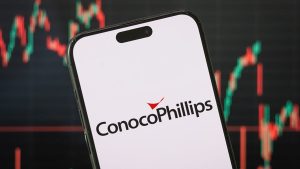The Nasdaq Composite
COMP,
outperformed the Dow Jones Industrial Average
DJIA,
in the first quarter of 2023. Much better. While the Dow barely made money in that time, gaining just 0.4%, the Nasdaq rose 16.8%.
If you’re bullish about the stock market, you don’t want to see such a huge gap in the returns of these two market benchmarks. The 16.4 percentage point divergence in the first quarter of 2023 is larger than all but four other quarters since the Nasdaq’s creation in 1971. The median divergence across 208 quarters since then is just 0.9 percentage point.
U.S. stocks typically don’t perform well when such a wide discrepancy appears. In three of those four prior occasions, the market was much lower a year later, as shown in the table below:
| Year | Quarter | Nasdaq over the Dow | Dow return, subsequent 12 months | Nasdaq return, subsequent 12 months |
| 1999 | 4 | 37.0 percentage points | -6.2% | -39.3% |
| 1991 | 1 | 18.4 | +11.0% | +25.2% |
| 2000 | 1 | 17.4 | -9.6% | -59.8% |
| 2001 | 4 | 16.9 | -16.8% | -31.5% |
| 2023 | 1 | 16.4 | ? | ? |
To be sure, it’s difficult to draw statistically significant conclusions from a sample of just four cases. But an additional straw in the wind that reinforces caution comes from the classic investment textbook Stock Market Logic, written by Norman Fosback, the former president of the Institute for Econometric Research. In that book he argued that significant market divergences are bearish because “a healthy market requires some semblance of internal uniformity.”
The truth of Fosback’s insight is evident when focusing on those quarters since 1971 in which, contrary to the situation in the first three months of this year, there was a small divergence between the Dow and the Nasdaq. There were 33 such quarters in which there was less than a one-percentage-point divergence, and the Dow’s return over the subsequent year was an average gain of 10.1%. The Nasdaq did even better subsequent to these small-divergence quarters, gaining 12.1%.
New highs, new lows
Fosback’s preferred indicator to measure uniformity or divergence was not the difference between the Dow and the Nasdaq. Instead, he created something called the “High Low Logic Index.” To calculate it, you start by taking the lesser of NYSE new 52-weeks weekly highs or new 52-week weekly lows and dividing by the number of issues traded. The resulting index is a 10-week exponential moving average of the weekly ratios.
According to Ned Davis Research, the High Low Logic Index currently stands at 2.7%, which is in the neutral zone. The last strong signal that the index gave was at the end of last year, when it flashed a sell signal.
The bottom line? The most optimistic assessment you can make based on the large Nasdaq-over-Dow divergence in the first three months of 2023 is that the market outlook is neutral. And there is the definite possibility it suggest a big drop for stocks lies ahead. At a minimum, the divergence is a flimsy foundation to support the bulls.
Mark Hulbert is a regular contributor to MarketWatch. His Hulbert Ratings tracks investment newsletters that pay a flat fee to be audited. He can be reached at mark@hulbertratings.com
This post was originally published on Market Watch




